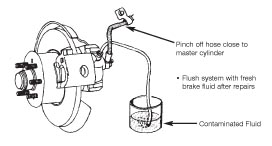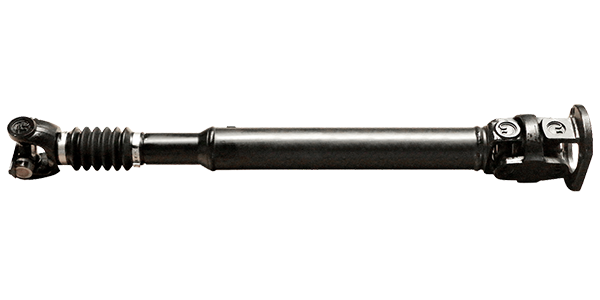 Application: All vehicles with power brakes.
Application: All vehicles with power brakes.
Problem: How to diagnose a sinking, low or spongy brake pedal.
Solution:
1. Begin by isolating the master cylinder. Remove the lines from the master cylinder and insert blocking plugs into the ports. Press on the brake pedal. If the pedal is firm and hard, the master cylinder is good. If the pedal still drops, either air is in the unit or it is bypassing internally. Bleed the unit or replace as necessary. Reconnect and bleed the system.
2. With a properly bled master cylinder test the brake hoses. Using a proper tool, carefully pinch off all the rubber brake hoses as close to the master cylinder as possible. Release one brake hose at a time. Press the brake pedal. If the brake pedal is firm and hard, move to the next circuit. Repeat until the circuit containing the defective component is located (the brake pedal will be softor sinking). Replace defective components as necessary.
3. Flush the system thoroughly with fresh brake fluid from a sealed container according to the manufacturer’s service procedures.
Tech Tip courtesy of Cardone.
For additional information on products offered by Cardone, visit www.cardone.com.











